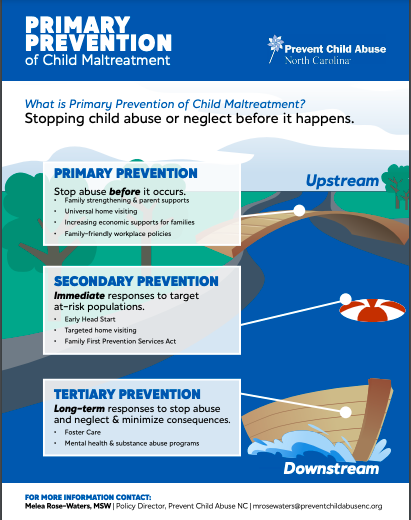 In the early years of life, children are building the foundation for their brains and bodies—forming more thana million neural connections every second from birth to age three. Lifetimes of lived experiences and decades of research have proven that adversity in childhood can have profound and lasting impacts on lifelong health and well-being. However, we now also know that these potentially harmful outcomes caused by toxic stress are not set in stone and can be prevented. When our goal is for children and their families to thrive, living happy and healthy lives, it does not make sense for us to wait until they are struggling or experiencing childhood adversity to intervene. Instead, we can take advantage of the growing body of research demonstrating ways to move “upstream” to shore up families before the cascade of adversities even begins.
In the early years of life, children are building the foundation for their brains and bodies—forming more thana million neural connections every second from birth to age three. Lifetimes of lived experiences and decades of research have proven that adversity in childhood can have profound and lasting impacts on lifelong health and well-being. However, we now also know that these potentially harmful outcomes caused by toxic stress are not set in stone and can be prevented. When our goal is for children and their families to thrive, living happy and healthy lives, it does not make sense for us to wait until they are struggling or experiencing childhood adversity to intervene. Instead, we can take advantage of the growing body of research demonstrating ways to move “upstream” to shore up families before the cascade of adversities even begins.
There are multiple levels of prevention, including primary prevention (upstream), secondary prevention (midstream), and tertiary prevention (downstream). The primary prevention of child maltreatment involves universally providing families with supports before any form of child abuse or neglect has occurred. Secondary prevention is instead supporting families at increased risk for child abuse or neglect, while tertiary prevention is responding and intervening after child abuse or neglect has already occurred to minimize the negative impacts and prevent further harm. All levels of prevention also must incorporate interventions at the systems level in order to address the structures that lead to inequitable outcomes and experiences of adversity.
Universal, primary prevention can also minimize the stigma associated with accessing resources while preventing the physical, emotional, and psychological consequences of child maltreatment and decreasing the economic burden on society of responding to maltreatment after it has happened. North Carolina spends over $2 billion each year on the downstream consequences of child abuse and neglect. Prevention means that instead of experiencing maltreatment, children are supported in vibrant, healthy, and thriving families and relationships. After all, childhood lasts a lifetime.
Some key primary prevention strategies that we focus on at Prevent Child Abuse NC (PCANC) include:
- Expanding evidence-based parenting education programs, delivered either in a group setting or through voluntary home visits;
- Increasing access to quality, affordable childcare and early education;
- Adopting family-friendly workplace policies, like paid leave;
- Providing economic and concrete supports for families; and,
- Educating with public awareness campaigns.
The Policy Team at PCANC is excited to now be able to share with you two new resources on primary prevention. First, our Primary Prevention Infographic defines the different levels of prevention and shows how to move “upstream” in our focus. And second, our new Primary Prevention of Child Abuse and Neglect one-pager highlights some key data and strategies around the prevention of child maltreatment.
PCANC’s Policy Team is committed to advocating for policies that strengthen families and prevent child maltreatment. We can prevent child abuse and neglect, North Carolina!
Please reach out to PCANC’s Policy Director, Melea Rose-Waters, with any questions or to learn more about the primary prevention of child abuse and neglect in North Carolina.
Also, to receive a copy of the Prevent Child Abuse 2021 Impact Report, please click here. 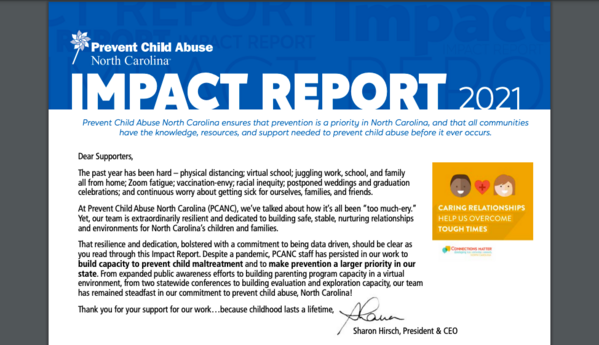
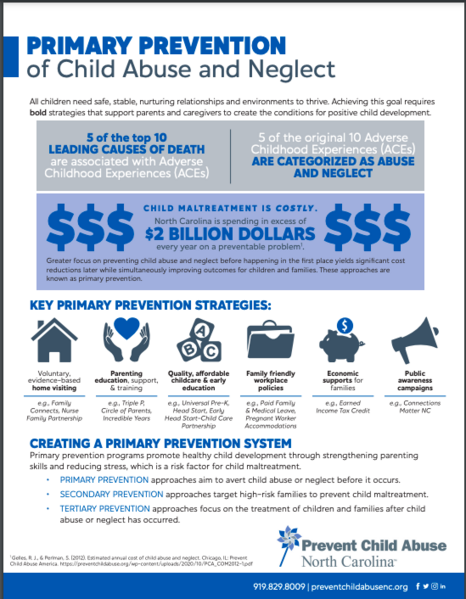
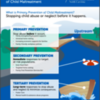
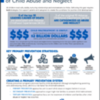
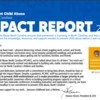
Comments (0)